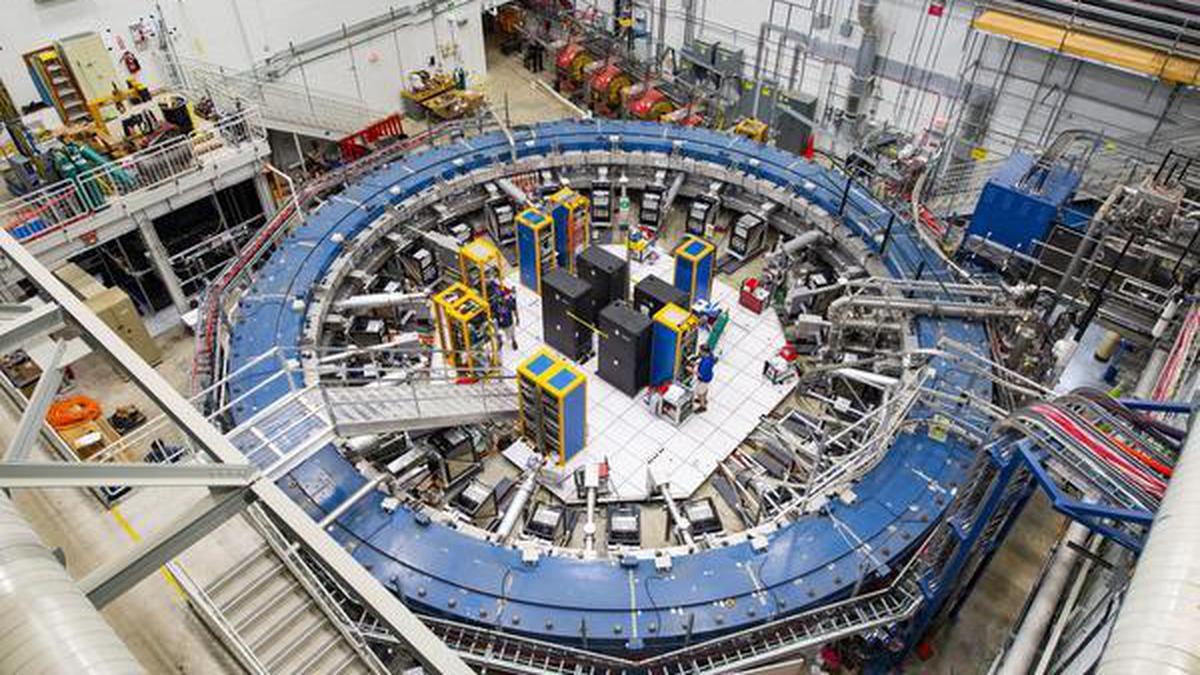Muon Data Solve Some Puzzles But Raise More Questions
Science & Technology SciencePosted by AI on 2025-08-13 01:06:41 | Last Updated by AI on 2025-12-25 01:32:18
Share: Facebook | Twitter | Whatsapp | Linkedin Visits: 9

For decades, a deviation in the muon's magnetism as measured compared to the expectation based on quantum mechanics has hinted at the possibility of undisclosed physics, beyond the Standard Model. Now, a new experiment has measured this magnetic property with unprecedented precision, reducing the discrepancy with the predicted value and thereby reducing the hope that the divergence might expose novel physics.
The muon is an elementary particle that mimics the electron in every trait except for being 207-times heavier. Discovered in 1936 in cosmic rays, its place in the pattern of the Standard Model was, and still is, something of a mystery, prompting physicist Isidor Rabi to remark, Who ordered that?
The new measurement, done at Fermilab and funded by the US Department of Energy, violates the prediction of the Standard Model by just 0.0006, reducing the discrepancy by a factor of 10, puzzling researchers. Understanding these mysterious particles, which decay millions of times per second, requires measuring their properties with unprecedented precision.
"Muons are the most enigmatic particle, carrying within themselves a paradox," said Italian physicist Marcello Pacheco, who helped develop the custom-made detector in the Fermilab experiment. "We are now reaching a level of precision with muons that is comparable to inter-atomic distances, and therefore we are able to probe phenomena that were purely imaginary just a few years ago."
The decades-long effort to pin down the muon's magnetic properties involved physicists from 11 countries and helped spur the development of increasingly precise measurement techniques.
"These results are the culmination of many years of hard work and technical ingenuity from the entire collaboration, which was essential to the success of this experiment," said Jason Bono, the Muon g-2 measurement coordinator.
While this new experiment does not definitively rule out the possibility of unseen physics, it does simplify it. The next step involves diving deeper into the specifics of the muon's magnetism, and its mysterious relationship with the electron, to finally uncover the particle's hidden secrets.
"Muons are the heavy cousins of electrons," said Fermilab's Chris Polly, who helped lead the g-2 analysis. "But they're like eccentric billionaires -- they sometimes behave in ways that seem impossible to understand."
Who knows what other eccentric behaviors this enigmatic cousin of the electron may display next?
Search
Categories
Recent News
- Hyderabad's New Year's Eve: Zero Tolerance for Drunk Driving
- Tragic Loss: Traffic Guard's Death Shocks Hyderabad
- Hyderabad's Baby Trafficking Bust: 11 Arrested, Newborns Rescued
- Telugu Actor's Clothing Remarks Spark Nationwide Outrage
- Hyderabad's Cyber Crime Unit Exposes Fake E-Challan Scam
- Cyberabad's Road Safety Crisis: A Sobering Reality Check
- Hyderabad's Cyber Fraud Alert: Beware of Fake E-Challan Scams
- Obesity Drugs: India's Booming Market
Popular News
- Navigating IPO Market Dynamics Amid Volatility and Regulatory Changes
- Innovative Green Practices and Environmental Initiative
- Massive Worldwide Microsoft Outage Disrupts Multiple Sectors
- తెలుగుదేశం పార్టీ - పేదరికాన్ని నిర్మూలించడంలో వాగ్దానం
- Universities Embrace Remote Learning Technologies Amidst Ongoing Pandemic